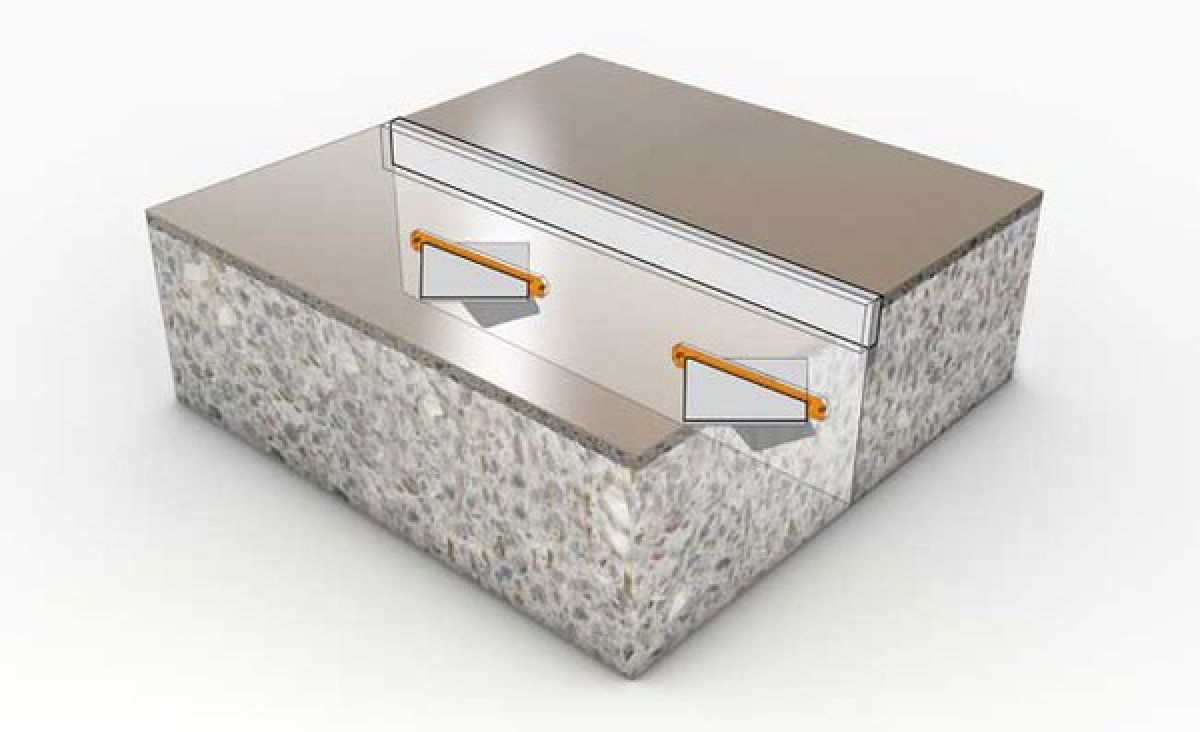Diamond Dowel System vs. Conventional Square or Round Dowels
Joint failure is the most common issue in a concrete floor. As the forklift travels over the joint, the wheels depress the edges of the joint when not properly supported. As little as 10 mm of movement can cause spalling. With joint failure comes downtime, increases in maintenance (equipment and floor), a drop in building valuation, and increased operating cost.
A dowel is placed between pours where the construction joints occur to provide positive load transfer. As the concrete cures the dowel allows the joint to move parallel to the dowel and lends strength to withstand some downward pressure across the joint.
Dowell Shapes
Round
The first dowels were smooth, round, steel rods that were 14 to 16 inches long and ¾ to 1 inch in diameter. They were placed at about 12 inches on center depending on the slab depth.
One half was sheathed or greased to allow freedom of movement after shrinkage while the other half was bonded into the slab. Once the concrete has cured the dowel adds strength against movement perpendicular to the joint.
Unfortunately, round dowels don’t help a concrete floor to withstand much movement parallel to the joint. Parallel movement restrains and prevents slab movement in this direction creating tensile stresses that result in random cracking.
Square
Conventional square dowels came into use in an attempt to relieve the tensile stress from parallel movement. These dowels were installed the same way as round dowels; however, a compressible material was placed along the vertical planes of the dowel to compensate for parallel movement and perpendicular while providing positive load transfer for the wheeled traffic passing over the joint.
Plates
Diamond shaped plates with a pocket on one side of the joint were substituted for the round and square dowels. Research by Wayne Walker and Jerry Holland found that a metal plate optimized material where stresses were highest during load transfer while still allowing freedom of movement perpendicular and parallel to the joint.
Plate Dowels Are a Significant Improvement
Plates have a lot going for them:
- They are more cost effective; the same amount of steel provides more strength where it’s needed.
- They are easier to align during construction.
- They decrease tensile stresses by allowing movement parallel to the joint.
Prior to plates, concrete contractors attempted to decrease tensile stresses by wrapping the dowel in a compressible material or installed a pocket former made of such material. With questionable results.
This same improvement can be used with plates, in a very natural way, which is another point in their favor.
Ease and Economy of Installation
Plates are easier to keep aligned than dowels. The tripping hazard during construction is lessened. And workers report it is easier to install since the plate must only be handled once; there is no removal and replacement as there is with dowels.
Plastic pocket formers can be nailed to the form and cast with the first slab. Plates are easily placed in the pockets just prior to the second pour. This makes cleanup between pours easier with no danger of bumping a dowel out of place.
Activities resulting in cracked slabs are also eliminated. Without the need to tap a dowel back into place, the slab can be left to cure without disturbance.
Plates are more economical than dowels in another way.
Dowels must be placed, on average, 12 inches on center. Plates, on the other hand, can be placed 18 to 30 inches on center depending on the plate size, loading, and slab details. Fewer plates are needed per installation.
The shape of the Diamond Dowel Plates is the most optimized dowel shape on the market today.
In Summary
The development of plate dowels has improved joint wear while lowering installation costs. They provide greater strength in the area needed with fewer plates installed. Diamond plates are especially useful at joint intersections because the triangular end can move more planes without damage and perform significantly better than dowels in this situation.
Plates are especially useful in projects constructed of shrinkage compensating concrete. Elimination of slab restraint is critical in projects constructed with SCC.

